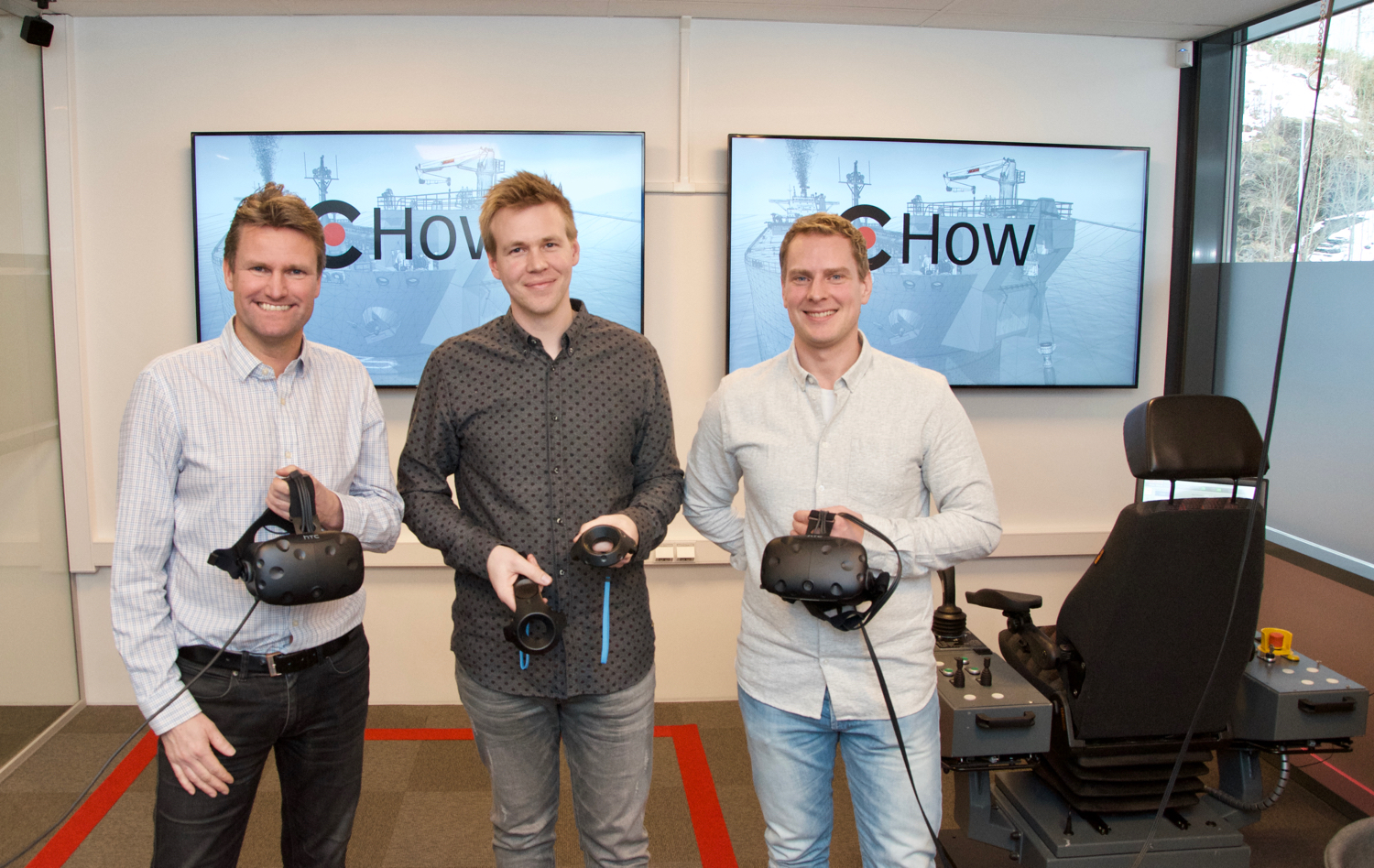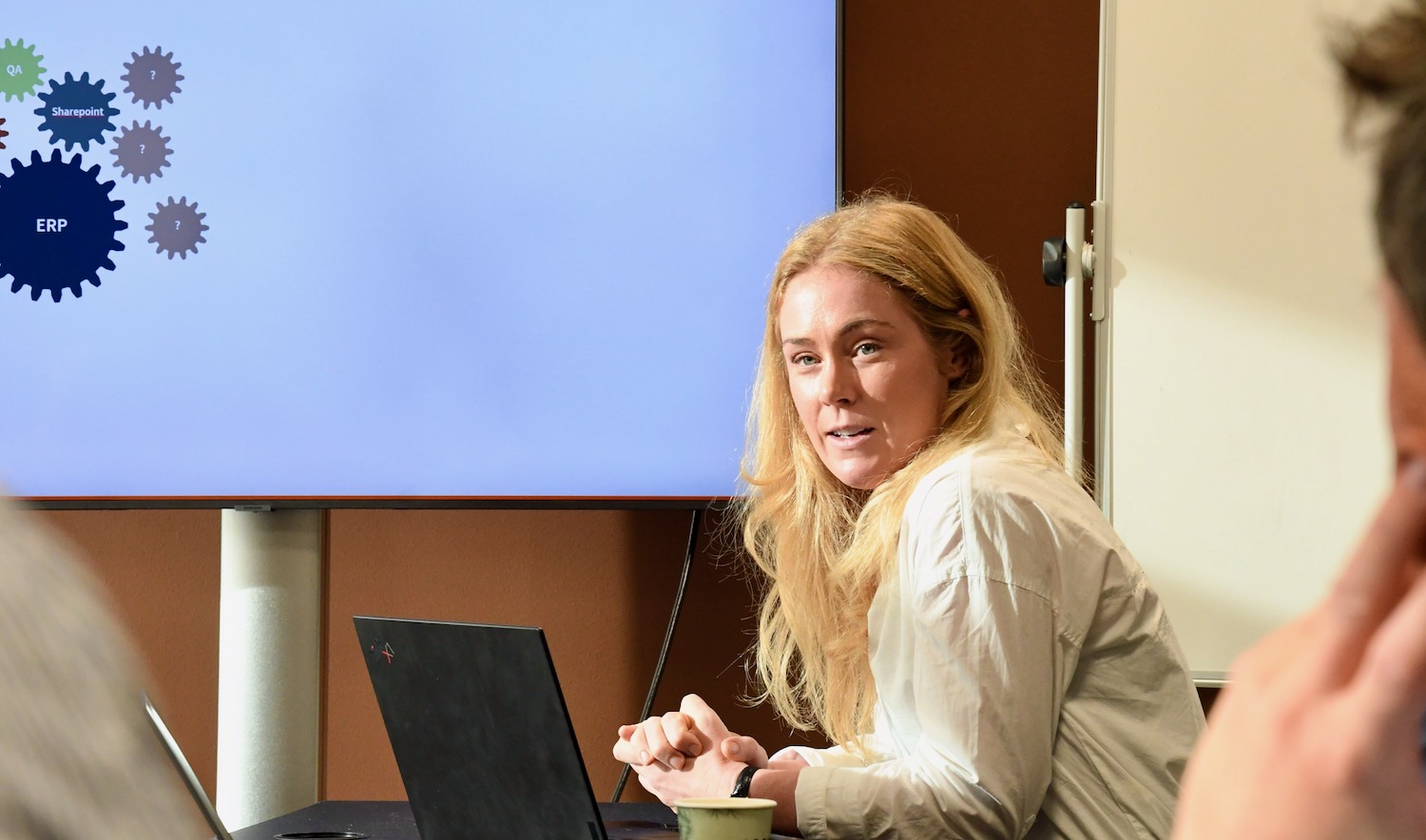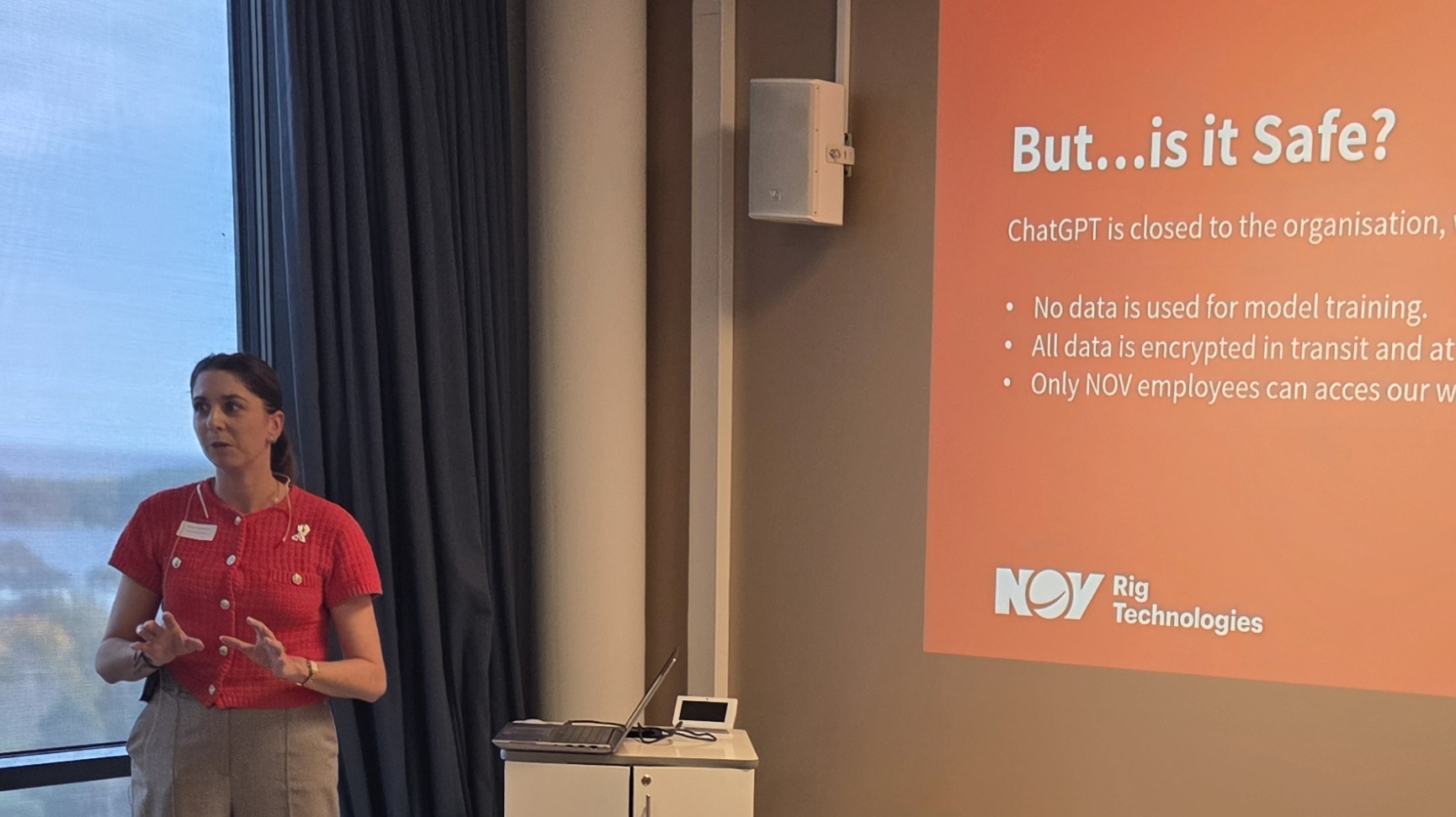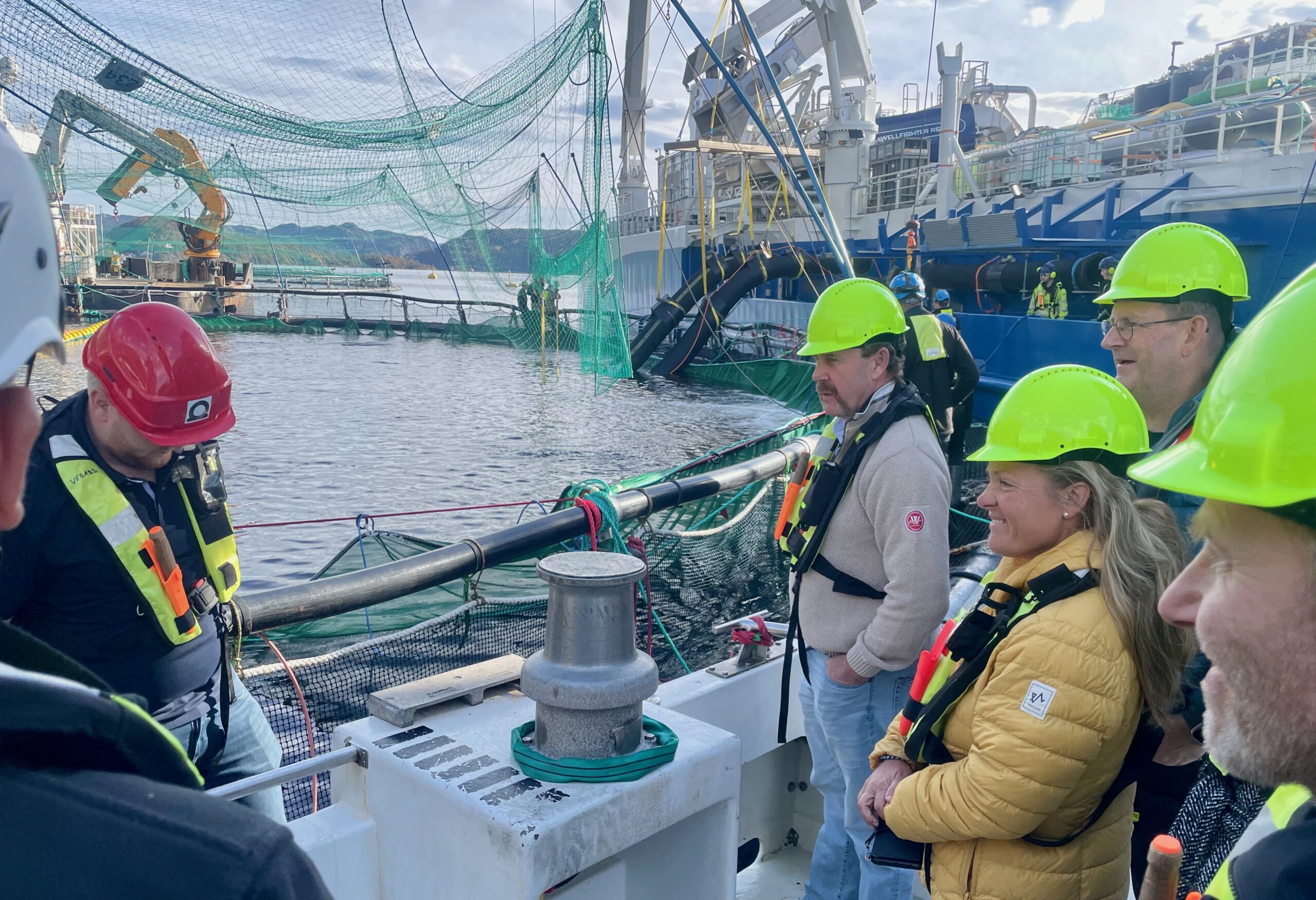“VR technology has improved immensely lately. This makes for a more flexible and even portable training and showroom system. It is smaller, cheaper and better than our previous simulator room,” says Jan Finckenhagen, Training Manager Offshore Mooring and Loading Systems at MacGregor.
When you put on the virtual reality glasses, linked to a laptop with MacGregor’s VR software, it is just like being on a vessel or an offshore installation. You can walk around, bend down, look over, turn your head – and you will be able to see exactly the same things you would see if you were onboard.
“You can even enter more restricted and dangerous areas, where you would never be allowed to go in real life, to observe operations from a different point-of-view, which might prove useful,” says Finckenhagen.
A screen reveals what the person with the VR glasses is watching.
“Knowing exactly what the person is looking at is especially useful for the instructor, who can easily give more precise information and instructions, which will make the training process more efficient,” says Finckenhagen.
The facility at MacGregor’s newly opened Arendal headquarters will remain the main site for personnel training and product showcasing. An expected 70-100 people will undergo training here every year in a room that also holds an operator chair for operating MacGregor’s cranes – again with the use of VR technology.
“Everything in the 3D model is accurately rendered. It is like an exact copy of reality. This makes the VR technology useful also for design testing and troubleshooting. In the model, you are able to spot the small things that could make a huge difference,” says Finckenhagen.





